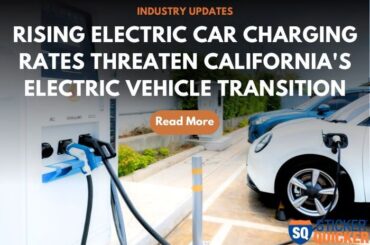California’s recent foray into electric vehicles (EVs) has led to lively debate around the state and beyond. On one hand, there are individuals and groups that see EVs as a key component in the fight for sustainable energy sources; on the other, some have raised concerns over potential drawbacks – particularly regarding cost, convenience, and access.
In this blog post, we’ll explore the pros and cons of California’s EV program with an eye toward how it could shape our future, both here in The Golden State and potentially further afield. With so much at stake in terms of sustainability progress as well as public safety and financial implications, understanding what lies ahead is paramount. Let’s dive right in!
California’s Electric Vehicle (EV) Program
California is leading the way in the EV revolution with its ambitious program aimed at reducing greenhouse gas emissions, improving air quality, and driving innovative clean energy solutions. The EV program was launched in 2012 and has since grown to become the largest in the United States. Under this program, California offers a variety of incentives to encourage consumers to purchase and lease EVs, such as rebates, tax credits, and access to carpool lanes.
In addition, the state has mandated that automakers increase the percentage of EVs in their lineup, with a goal of having 5 million zero-emission vehicles on California’s roads by 2030. With its progressive policies and innovative spirit, California is at the forefront of driving the shift toward electrification and setting an example for other states to follow.
Advantages
California’s Electric Vehicle (EV) Program is significantly impacting the state’s transportation landscape. One of the primary benefits of this program is its contribution towards reducing air pollution, a pressing issue in the densely populated state. With more EVs on the roads, harmful emissions like carbon dioxide and nitrogen oxides have been reduced drastically, promoting a healthier environment.
Additionally, the state is lowering its dependence on fossil fuels, decreasing its carbon footprint, and creating a more sustainable future. Furthermore, EVs also help create job opportunities in the state’s clean energy sector, giving the economy a boost while promoting a greener way of life. Overall, the advantages of the EV Program for California are multifarious, ranging from environmental sustainability to improved economic prospects.
Disadvantages
Despite California’s push towards electric vehicles, there are several notable disadvantages to the EV program. One major concern is the limited range of most electric cars, which means they need to be charged more frequently than traditional gas-powered vehicles. Additionally, the lack of charging infrastructure in many areas can make it difficult for drivers to find a place to charge their cars when they need a boost.
Another major disadvantage is the cost of purchasing an electric car, which can be significantly more expensive than a gas-powered car, even with tax incentives. Additionally, the batteries used in electric cars have a limited lifespan and must eventually be replaced, adding to the overall cost of ownership. While the EV program does have its benefits, it’s important to consider these potential downsides before making the switch to an electric vehicle.
Comparisons
The implementation of electric vehicle (EV) programs has been gaining momentum across the United States, but the level of their success varies across different states. As EVs grow in popularity, it’s important to look closely at the programs to promote their use. Comparisons between the EV programs in other states offer insights into what works and what doesn’t and provide invaluable information to help states improve their initiatives.
It’s fascinating to see how different areas are approaching the unique opportunities and challenges associated with building sustainable transportation networks. By learning from one another, we can find the best ways to support the ongoing evolution of EV infrastructure and technology and create a cleaner and more efficient transportation system.
Environmental Impact
California has been at the forefront of the electric vehicle (EV) revolution for years, with the state implementing several policies to incentivize EV adoption and reduce dependence on fossil fuels. While these efforts have certainly yielded positive results, such as reduced greenhouse gas emissions and air pollution, there are still lingering questions about the long-term environmental impact of the EV program on California’s future.
Depending on how the EV market evolves in the coming years, there could be potential issues related to resource extraction for battery production, increased demand on the electric grid, and end-of-life disposal of used EV batteries. However, there are opportunities to address these challenges and ensure that the EV program remains a sustainable solution for California’s transportation needs.
Final Evaluation
As we reach the end of our evaluation, it’s clear that sustainability must be at the forefront of decision-making for a brighter future. We’ve seen the impact of neglecting the planet’s finite resources and the consequences of not considering future generations. To ensure a sustainable future, we must prioritize innovation in renewable energy sources, conservation efforts, and responsible waste management practices.
Education and awareness campaigns can help individuals and communities adopt more sustainable habits. Our recommendations benefit the environment and contribute to economic growth and social equity. It’s time to commit to a sustainable future, and we have the tools and knowledge to make it a reality.






